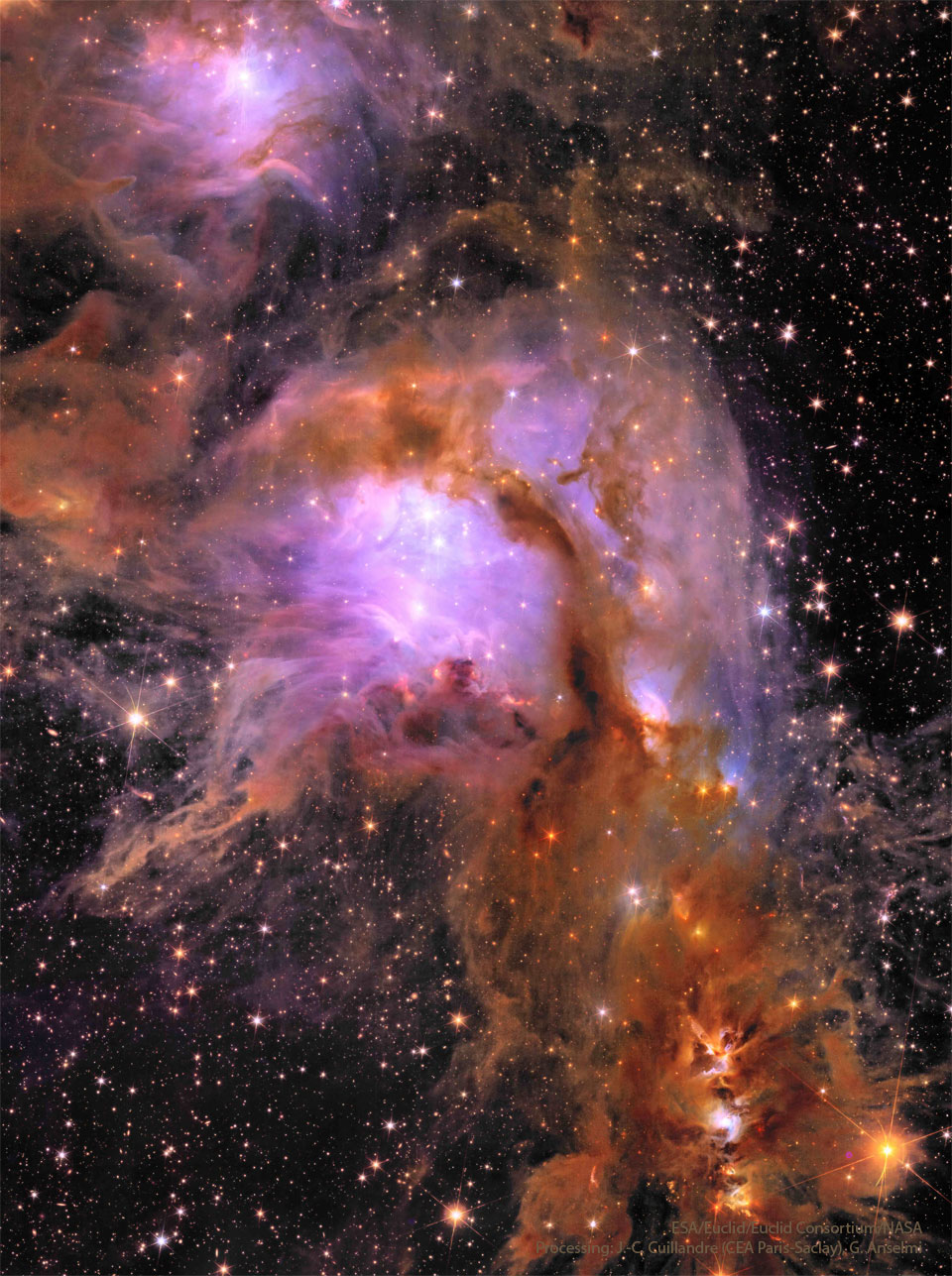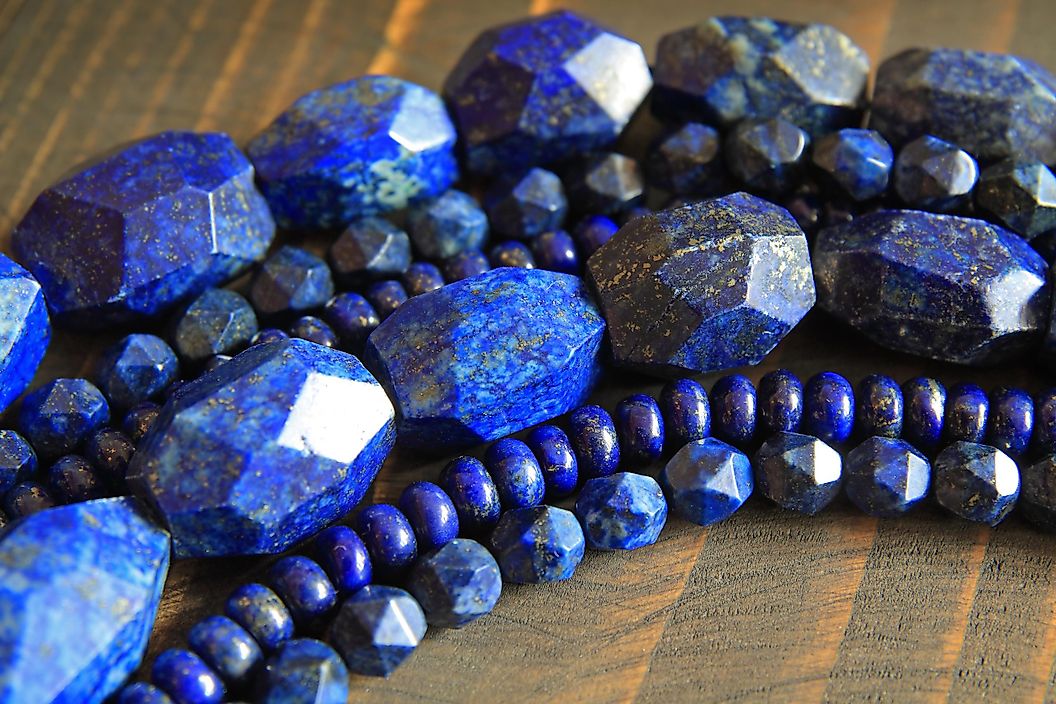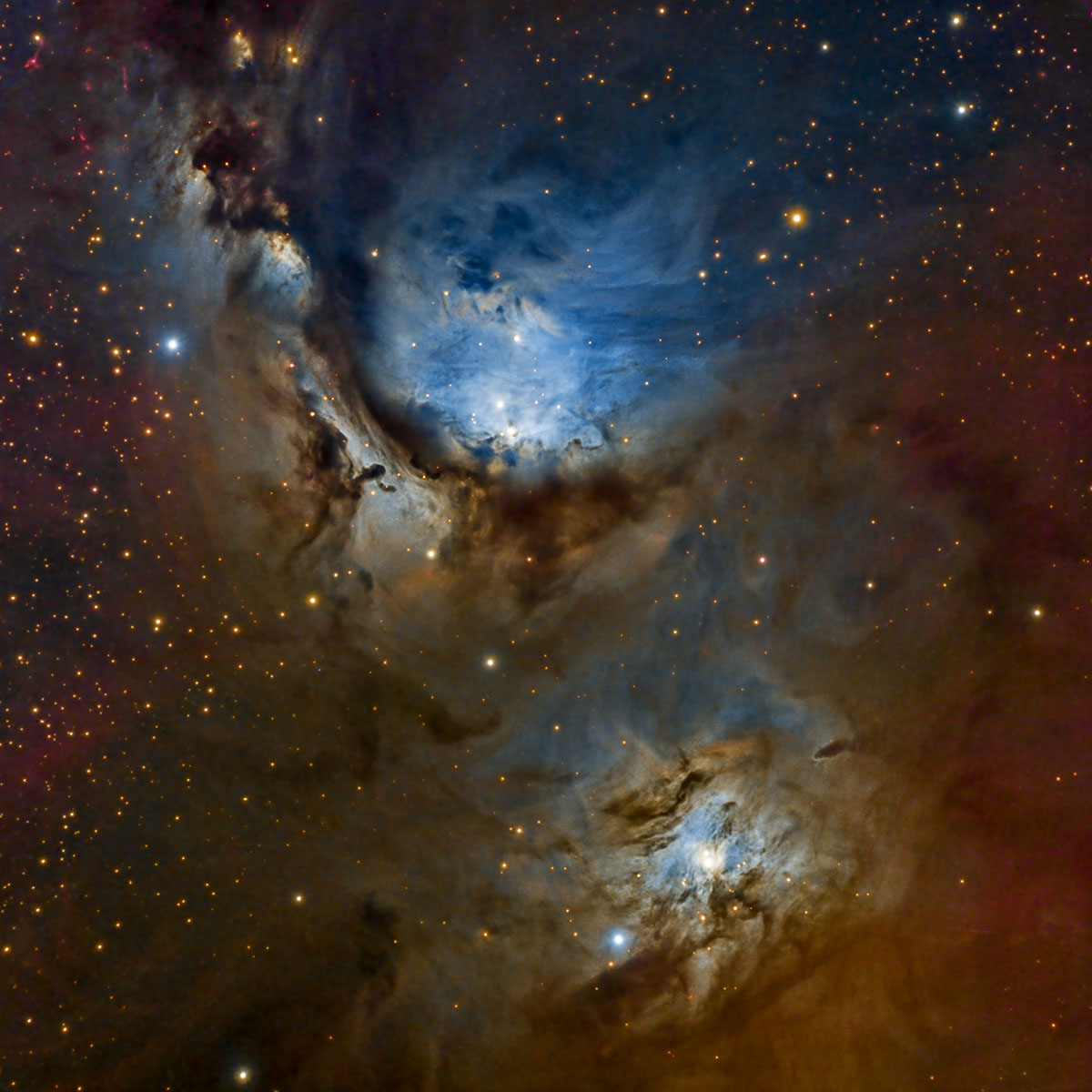JimB wrote: ↑Fri May 24, 2024 8:25 am
Ann wrote: ↑Fri May 24, 2024 5:54 am
Blue star light does not make purple reflection nebulas!

Ann
The info on the
ESA site says
The blue, green, red channels capture the Universe seen by Euclid around the wavelength 0.7, 1.1, and 1.7 micron respectively. This gives Euclid a distinctive colour palette: hot stars have a white-blue hue, excited hydrogen gas appears in the blue channel, and regions rich in dust and molecular gas have a clear red hue.
So I suspect that the purple colour is a result of the blue being combined with the red they have used for the infra-red band.
PS: Look at all those little galaxies lurking in the background detail when you zoom in.
Really gives a sense of the unimaginable vastness of space!
Suppose a faraway galaxy has its green photons (.515 μm in sRGB or 0.532 μm in HDTV) redshifted to the green channel of the presentations of Euclid's filters (1.1 μm, that would mean space expansion 2.1 times during the photons' travel).
Then the blue would represent 0.7 μm /2.1 = 0.33 μm photons, a UV just a little short of violet, and the red would represent 1.7 μm /2.1 = 0,81 μm photons, an IR just a little long of crimson.
Therefore such a galaxy would be rendered slightly more colourful than in life, as if it was photoshopped to more saturated colours.
According to
Ned Wright's Javascript Cosmology Calculator with the default settings, a galaxy with the redshift of z=2.1 is seen as it was at the age 3.161 Gyr since the Big Bang. Such a galaxy should be young and its core should not be red-and-dead; not at all like orange core / blue arms grand design of a galaxy 13 Gyr old.
Another thing Ned's Calculator tells us is the angular distance, 5.7 Gly, which is 5.7 Gly / 206 kly = 28000 times the distance to Small Magellanic Cloud. SMC angular size
is 5°20′ × 3°5′, and a similar galaxy at 28000 times the angular distance should have an angular size of 0.69'' × 0.40'' (these '' means arc seconds here). Now Euclid resolves 0.3'' in IR and therefore such a galaxy would look like a pair of pixels.
(By the way, there is a redshift of the maximum angular distance. According to that calculator with the default settings, it's z=1.6 and the angular distance is 5.8 Gly, and a galaxy the size of SMC would be pretty the same pair of pixels, just little bluer and brighter than at z=2.1. At redshifts z>1.6 the more distant is a galaxy the less is its angular distance. The angular distance stays the same as the space expands; it is the distance as it was at the time when the galaxy emitted the photons we can see now. The most early galaxies that JWST can see, as they were 0.4 Gyr since the Big Bang, are heavily redshifted with z=11.5 and dimmed 11.5 times by photons' count, too, but enjoy a healthy angular size, their angular distance being just 2.6 Gly).
Well, let's hunt a little.

- Euclid’s_new_image_of_star-forming_region_Messier_78 -2.jpg (7.16 KiB) Viewed 487 times

- Euclid’s_new_image_of_star-forming_region_Messier_78 -1.jpg (4.06 KiB) Viewed 496 times
Does it look like real colours of galaxies? Or are the disks too red and the cores too orange?
IMHO those galaxies are redshifted heavier than z=2.1 and Euclid's representation (RGB channels for 1.7, 1.1, and 0.7 μm) does not quite compensate such a redshift.
And I still wonder why should early (3 Gyr or younger) disk galaxies be redder at their rims than at their cores.
 M78 from the Euclid Space Telescope
M78 from the Euclid Space Telescope












